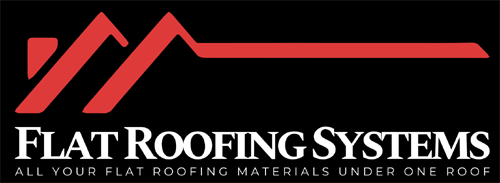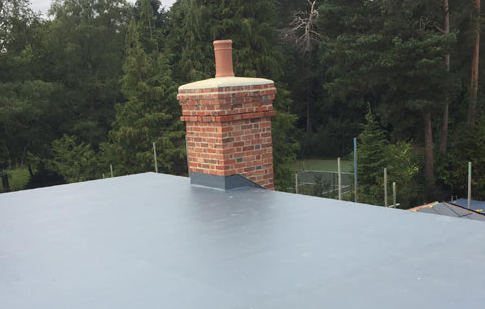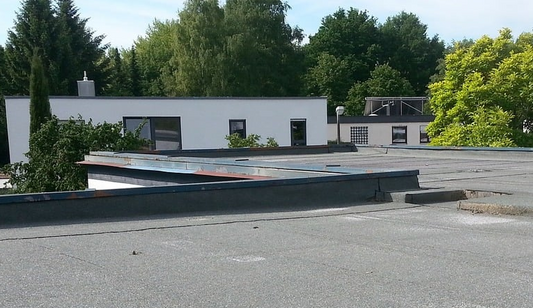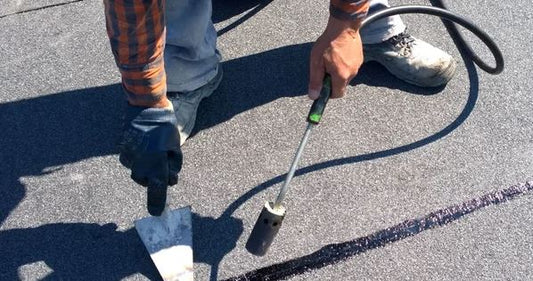PVC single-ply roofing membranes offer you a highly durable and energy-efficient roofing solution for commercial buildings. These membranes consist of pliable plastic sheets reinforced with polyester or fibreglass, featuring chemical-resistant properties and UV protection. They're installed through heat-welded seams that create watertight bonds stronger than the membrane itself. With proper installation and maintenance, you can expect a 20-30 year lifespan and up to 30% reduction in cooling costs.
Key Points
- PVC roofing membranes consist of pliable plastic sheets reinforced with polyester or fibreglass, offering exceptional durability and waterproofing capabilities.
- Heat-welded seams create bonds stronger than the membrane itself, ensuring a watertight and long-lasting roofing system.
- Installation requires precise surface preparation, proper sheet overlap, and professional hot-air welding techniques for optimal performance.
- PVC roofs typically last 20-30 years with costs ranging from £45 -75 per M2 installed and significant energy savings.
- Regular bi-annual maintenance inspections and prompt repairs of seams, flashings, and drainage systems maximize the roof's lifespan.
What Is PVC Roofing
PVC (polyvinyl chloride) roofing is a sturdy single-ply membrane system that comprises pliable plastic sheets reinforced with polyester or fiberglass. The sheets are heat-welded together during installation, creating a smooth, waterproof barrier that shields your building from the elements.
The chemical composition of PVC roofing includes plasticizers, stabilizers, pigments, and other additives that improve its performance characteristics. These components collaborate to offer UV resistance, fire retardancy, and flexibility. While PVC roofing presents numerous advantages, such as outstanding chemical resistance and energy efficiency through its reflective white surface, it's vital to take into account its drawbacks. The material can become fragile in extreme cold and may contract over time due to plasticizer loss.
You'll need to ensure proper installation by certified contractors who comprehend the specific requirements of PVC systems, including accurate membrane overlap, appropriate heat welding temperatures, and suitable fastening methods.
The system's success largely relies on the quality of installation and the membrane's thickness selection based on your building's needs.
Benefits and Key Features
A roofing system's durability hinges on its core features, and single-ply PVC membranes deliver exceptional performance in multiple areas. You'll find that PVC roofing provides superior resistance to chemicals, fire, and UV radiation while maintaining structural integrity over decades of use. The material's high energy efficiency comes from its reflective white surface, which reduces cooling costs and minimizes your building's environmental impact.
PVC membranes offer several distinct advantages that make them a top choice for commercial applications:
- Heat-welded seams create permanent, watertight bonds that are stronger than the membrane itself
- Chemical resistance protects against industrial pollutants, grease, and harsh cleaning agents
- Durability ratings typically exceed 20 years, with many systems lasting 30+ years when properly maintained
- Energy efficiency through high solar reflectance, which can reduce cooling costs by up to 30%
You'll also benefit from PVC's flexibility during installation. The material can accommodate various roof shapes and penetrations while maintaining its protective properties. This adaptability, combined with its low maintenance requirements, makes PVC roofing a cost-effective solution for long-term performance.
Installation Methods and Best Practices
Successful installation of single-ply PVC roofing requires meticulous attention to surface preparation and proper technique. You'll need to start by confirming the substrate is clean, dry, and free of debris. Before beginning installation, inspect the entire roof surface for damage and make necessary repairs to create a smooth working surface.
When implementing roofing techniques, you'll want to unroll the PVC membrane and allow it to relax for 15-30 minutes before installation. It's important to maintain proper overlap specifications between sheets, typically 3-6 inches depending on manufacturer requirements.
You'll need proper tools including heat welders, seam probes, and rubber rollers to guarantee watertight seams.
Safety precautions must be your top priority throughout the installation process. Make sure your team training includes fall protection protocols and proper use of personal protective equipment. You'll need to establish clear communication systems and designate safety monitors.
Weather conditions also play a significant role - don't install PVC membranes during precipitation or when temperatures fall outside manufacturer-specified ranges. Always verify seam integrity through pull tests and visual inspection before completing the installation.
Material Components and Manufacturing
While proper installation methods guarantee long-term performance, understanding the core material composition reveals why PVC roofing membranes excel in durability. The PVC membrane fabrication process combines polyvinyl chloride resin with plasticizers, stabilizers, and other additives to create a flexible, weather-resistant material. You'll find that the chemical composition typically consists of 50-70% PVC polymer and 25-35% plasticizers, with the remaining percentage made up of essential performance enhancers.
During manufacturing, these components undergo several precise stages to ensure ideal material properties:
- Raw materials are mixed in temperature-controlled conditions to create a homogeneous compound
- The mixture is fed through a calendering process that forms it into sheets of specific thickness
- Reinforcement layers, typically polyester or fibreglass, are embedded between PVC layers
- The finished membrane undergoes quality testing for thickness, flexibility, and strength
The chemical composition of modern PVC membranes includes UV stabilizers and fire retardants, making them highly resistant to environmental degradation.
You'll notice manufacturers often customize their formulations to meet specific performance requirements, such as enhanced chemical resistance or increased flexibility in cold temperatures.
Maintenance and Repair Guidelines
Regular maintenance checks help identify potential issues before they develop into costly repairs on PVC roofing membranes. You'll need to schedule preventive maintenance inspections at least twice a year, focusing on seams, flashings, and drainage systems. During these checks, clear debris from drains and gutters, inspect for membrane punctures, and evaluate all termination points.
If you discover damage, address it promptly to prevent water infiltration. For small tears, you can apply PVC patches using hot-air welding equipment. When performing emergency repairs, first clean the damaged area thoroughly with approved PVC cleaner and let it dry completely. You'll need to extend the patch at least 2 inches beyond the damaged area on all sides.
Keep detailed maintenance records, including dates of inspections, repairs performed, and any noted membrane deterioration. Pay special attention to high-traffic areas and locations around rooftop equipment. If you notice widespread chalking, cracking, or membrane shrinkage, consult a professional roofer immediately.
Don't attempt complex repairs without proper training, as improper techniques can void your warranty and lead to more extensive damage.
Weather and Environmental Performance
Throughout varying climate conditions, PVC roofing membranes show exceptional resistance to environmental stressors. You'll find that these membranes have undergone extensive durability testing to guarantee they maintain their structural integrity against UV radiation, extreme temperatures, and chemical exposure. The material's proven track record spans decades of performance in diverse climates, from scorching deserts to frigid mountain regions.
When it comes to sustainability advantages, PVC membranes offer significant environmental benefits. You can rely on their reflective white surface to reduce your building's cooling costs and minimize urban heat island effects. These membranes are also recyclable at the end of their service life.
- Withstands temperatures from -40°C to 70°C without material degradation
- Resists acid rain, chemical pollutants, and industrial exhaust
- Maintains flexibility and doesn't become brittle with age
During extreme weather events, you'll appreciate PVC's superior waterproofing capabilities and resistance to high winds. The material's hot-air welded seams create a monolithic surface that prevents water infiltration, while its mechanical attachment system provides enhanced wind uplift resistance, particularly in high-velocity hurricane zones.
Cost Analysis and ROI
Initial investments in PVC roofing systems typically range from £45 - £75/M2, depending on project scope and location. While this upfront cost may be higher than traditional roofing materials, you'll find significant long-term savings through the system's extended lifespan and reduced maintenance requirements. A longevity comparison shows that PVC membranes can last 20-30 years, outlasting many conventional roofing options.
The energy efficiency of PVC roofing delivers substantial ROI through decreased heating and cooling costs. White PVC membranes reflect up to 85% of solar radiation, potentially reducing your building's cooling expenses by 20-30% annually. You'll also benefit from lower repair and replacement frequencies compared to traditional roofing systems.
When calculating your total return on investment, consider these key factors: reduced energy consumption, minimal maintenance costs, and decreased frequency of replacement. The typical payback period ranges from 5-7 years, depending on your climate zone and energy rates.
Common Problems and Solutions
While PVC roofing systems offer exceptional ROI and durability, they can experience specific issues that require attention. Understanding these problems and their solutions will help you maintain your roof's integrity and extend its lifespan. Most issues stem from improper installation, environmental factors, or lack of regular maintenance.
Common issues you'll need to address include membrane shrinkage, punctures, and seam failures. To ensure top-notch durability factors, you'll want to implement a proactive maintenance program and address problems immediately. Leak prevention starts with proper installation and continues through regular inspections of critical areas.
- Membrane separation at seams: Apply heat welding repairs using professional-grade equipment and guarantee proper overlap
- Punctures from foot traffic or debris: Install walkway pads in high-traffic areas and remove sharp objects promptly
- Ponding water: Address drainage issues by installing additional drains or adjusting slope
- UV damage and weathering: Apply protective coatings and guarantee proper thickness during installation
Regular inspections and immediate repairs will prevent small issues from becoming major problems. You'll need to work with certified contractors who understand PVC-specific repair techniques and can maintain your roof's warranty requirements.
Comparing PVC With Other Membranes
When comparing PVC roofing membranes to other single-ply options like EPDM, several key differences emerge in performance, cost, and installation requirements.
You'll find that PVC offers superior chemical resistance compared to EPDM roofing, making it ideal for restaurants and industrial facilities where grease exposure is common. While EPDM might be less expensive initially, PVC's durability comparison shows it typically lasts 5-10 years longer.
In terms of environmental impact, PVC membranes are fully recyclable at the end of their lifecycle, though they do require more energy to produce than EPDM. You'll notice that PVC's hot-air welded seams create stronger bonds than EPDM's adhesive seams, but they're comparable to TPO's heat-welded connections.
PVC also demonstrates better fire resistance than both alternatives and maintains its flexibility throughout its service life.
You should consider that PVC costs more upfront than EPDM, but its enhanced durability and lower maintenance requirements often result in a better long-term value proposition. The membrane's white surface reflects heat , offering better energy efficiency than black EPDM roofing.




